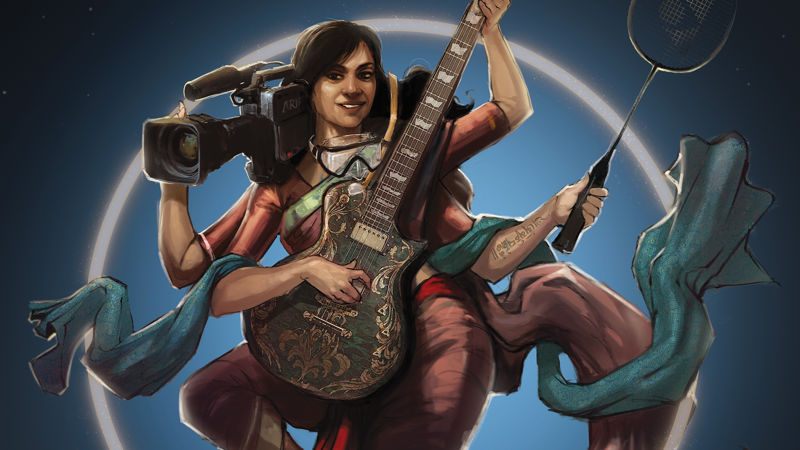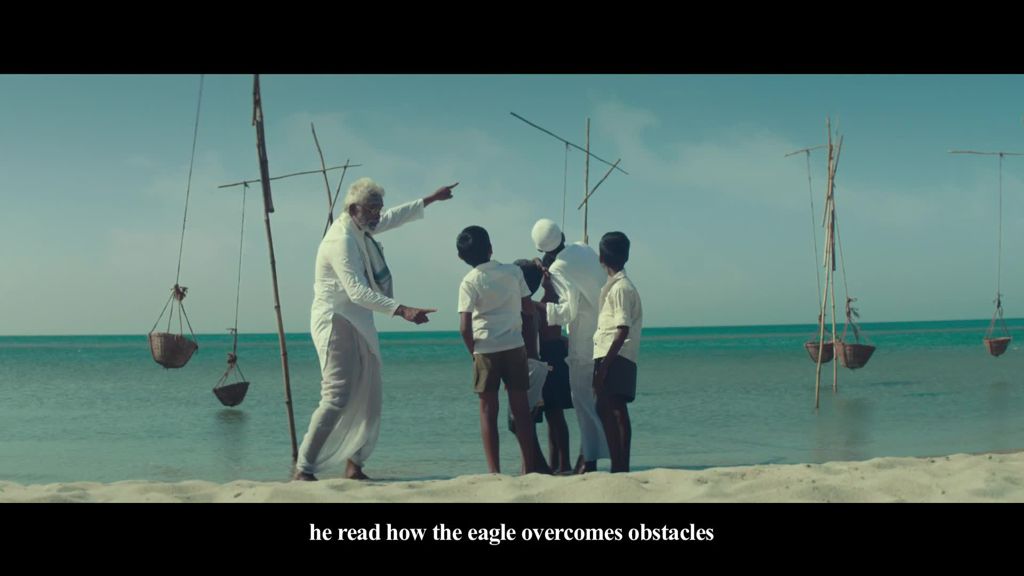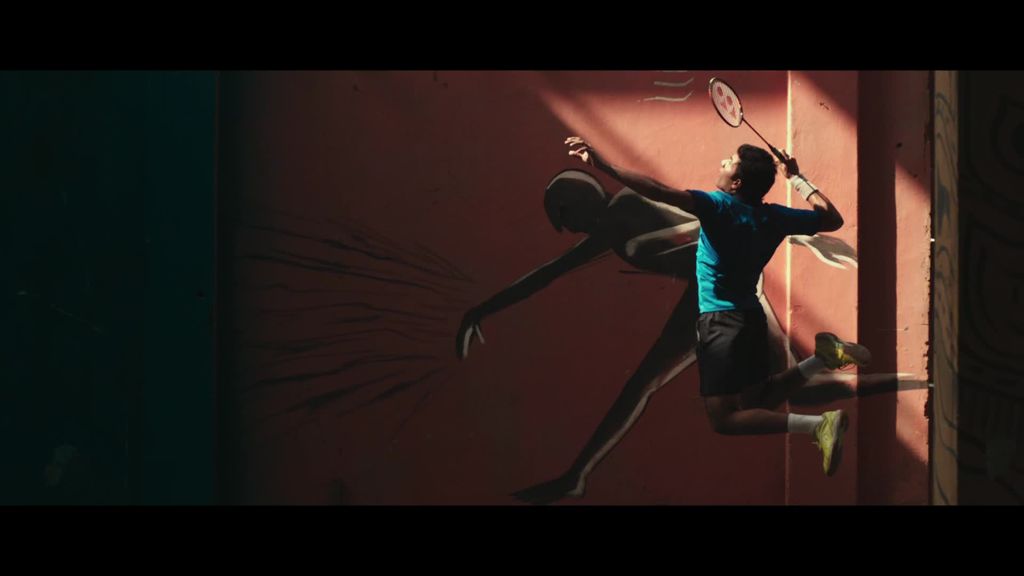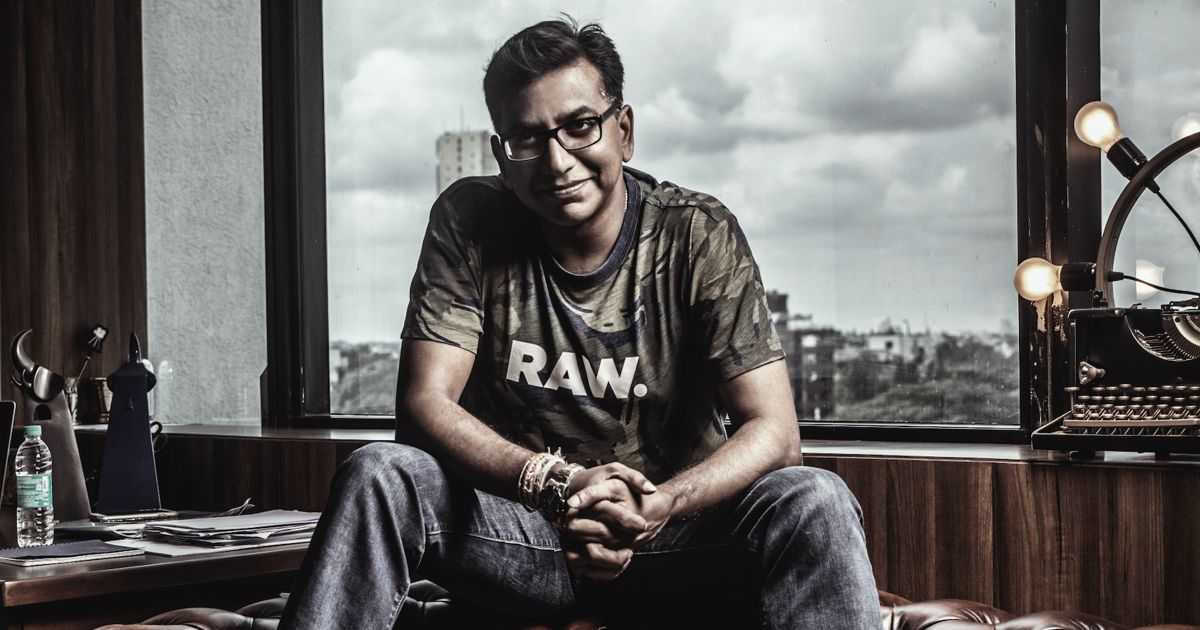Senthil Kumar: Rise of the rocket man
When Grey India was seeking “a fool” to send to Sri Lanka, a 24-year-old Senthil Kumar didn’t let civil war in the country stand between him and a CD role. Now, as JWT India’s CCO, the former rocket science student is one of the country’s leading admen. Here, he assesses India’s quest for an advertising identity.
Advertising; it ain’t rocket science, right? Well, even if it were, India’s advertising industry would be in safe hands with Senthil Kumar, JWT India’s Chief Creative Officer, who studied engineering, and specialised in rocket science.
But while a student at Bangalore University he was also the culture secretary of the college campus and had a passion for film. He thought that a career in advertising would be a bridge to working in the features industry but says that he has “been on that bridge a long time now”, though it’s one he continues to enjoy traversing.
They said, ‘we’ll multiply [your salary] by five. Do you have a passport?’ I said, ‘fucking yes, of course’, and got a passport done in a week and I went there without having a clue about anything.”
After passing a series of exams, he was initially offered a role as a trainee in account management but, once he found out that role was not a creative one, he turned it down, much to the surprise of those offering it to him, and started again. Then, he says, he got lucky. In 1997, at only his second job, at Grey India, the agency was “looking for a fool” to take on a creative director role in Sri Lanka, which at that point in time was in the grip of a civil war. Kumar, an ambitious 24-year-old, was that fool. “They said, ‘how much are you getting now?’ So, I told them. They said, ‘we’ll multiply that by five. Do you have a passport?’ I said, ‘fucking yes, of course’, and got a passport done in a week and I went there without having a clue about anything.”
Credits
View on- Agency J. Walter Thompson/Bangalore
- Production Company 1st December
- Director Senthil Kumar
-
-
Unlock full credits and more with a shots membership
Credits
View on- Agency J. Walter Thompson/Bangalore
- Production Company 1st December
- Director Senthil Kumar
- Copywriter Dhruv Warrior
- Exec Producer Atul Kattukaran
- DP Anup J Kat
- Line Producer Bhushan Bagadia
- Sound Design Dhruv Ghanekar
- Editor Priyank Premkumar
- Sound Design Joseph George / INDIA
- Vocal Percussion Art Taufiq Qureshi
Explore full credits, grab hi-res stills and more on shots Vault
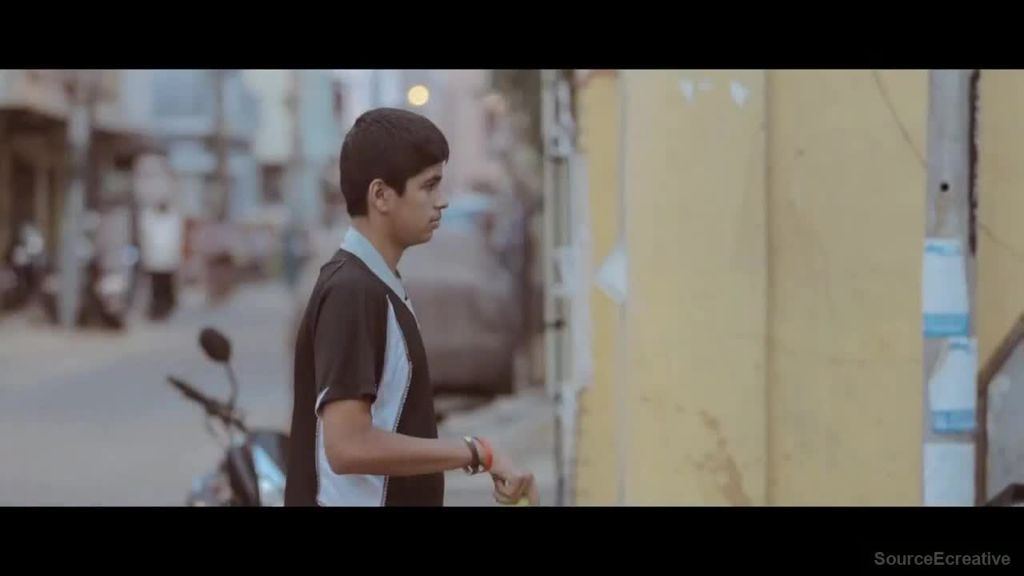
Credits
powered by- Agency J. Walter Thompson/Bangalore
- Production Company 1st December
- Director Senthil Kumar
- Copywriter Dhruv Warrior
- Exec Producer Atul Kattukaran
- DP Anup J Kat
- Line Producer Bhushan Bagadia
- Sound Design Dhruv Ghanekar
- Editor Priyank Premkumar
- Sound Design Joseph George / INDIA
- Vocal Percussion Art Taufiq Qureshi
Above: Kumar's spot for Nike.
Kumar spent three years in Sri Lanka, working with their biggest client, British American Tobacco and winning a fair share of local business, as well as a slew of awards. “It was great,” says Kumar, “because at that age I had nobody above me and I was running the show. It helped me cut my teeth and find my way around this business of advertising and the business of ideas.”
Now one of the most respected creatives in Indian advertising, Kumar talks to us about the state of the industry in his home country, the challenges it faces and why, if you’re an artist, there’s no such thing as scam advertising.
It’s like how Bollywood tries to ape Hollywood on a daily basis. If that ends up happening in advertising, that will be due to a failure of the Indian advertising market.
What are your thoughts on the current state of Indian creativity? Have the last year or two years been successful, creative and interesting? What are the big challenges that you’ve faced?
I think the ambition has always been, from an Indian point of view, to create something that is very different from the rest of the world. I don’t think we’ve had our share of success yet, like some of the other markets, such as South America, which has a very distinct visual language and a very visual style, which they own. And the Thais, too, they have a very specific sense of humour.
I think that the more Indian creative people try to get to their roots and try and find their identity, the more we will be able to create something extraordinary and really surprise everybody – that’s the stuff that nobody has seen.
I think to stand out on the world stage you have to be as original, as Indian, as you can be.
It’s like how Bollywood tries to ape Hollywood on a daily basis. If that ends up happening in advertising, that will be due to a failure of the Indian advertising market. We have not, as yet, been able to create that absolutely original Indian identity in creativity.

Some people working in the Indian advertising industry have said one of the failings of Indian creativity is that it is too distinct, that it hasn’t translated internationally and that’s why it doesn’t win many international awards. So, do you think the opposite is true?
Yes. I think the absolute opposite of that. I think to stand out on the world stage you have to be as original, as Indian, as you can be. Only then will people sit up and take notice and ask, ‘where is this world? Why haven’t we seen this before?’
I think that’s the strength of any particular region or any creative person. You have to have your own individual identity. That’s why most famous directors have a particular style. They master the art of the craft, they have something that is their own and that’s what’s important for any creative industry or for any creative person.
I think from a technology point of view, we think of India as the backroom of technology for the whole world. We haven’t been able to blow anybody’s mind with a technological idea yet.
You’ve got to look at it differently and look at your own roots, your own experience and your own lives. We’ve had something at JWT for a long time, which I think Craig Davis [JWT’s Worldwide CCO] said, which is that real life is more interesting than advertising.
Credits
View on- Agency J. Walter Thompson/Amsterdam
- Production Company In-House at Agency
- Director Senthil Kumar
-
-
Unlock full credits and more with a shots membership
Credits
View on- Agency J. Walter Thompson/Amsterdam
- Production Company In-House at Agency
- Director Senthil Kumar
- Ad Agency J. Walter Thompson/Mumbai
- Creative Senthil Kumar
- Creative Bas Korsten
- Editor Priyank Premkumar
- Sound Engineer Joseph George / (Executive Producer)
- Music Director Dhruv Ghanekar
- Editor Dev Nayak
- Editor Kevin Menezes
- Post Producer Jebastin Anton
Explore full credits, grab hi-res stills and more on shots Vault

Credits
powered by- Agency J. Walter Thompson/Amsterdam
- Production Company In-House at Agency
- Director Senthil Kumar
- Ad Agency J. Walter Thompson/Mumbai
- Creative Senthil Kumar
- Creative Bas Korsten
- Editor Priyank Premkumar
- Sound Engineer Joseph George / (Executive Producer)
- Music Director Dhruv Ghanekar
- Editor Dev Nayak
- Editor Kevin Menezes
- Post Producer Jebastin Anton
Above: Kumar's work Jimmy Nelson, Blink and They're Gone.
Do you think that the pool of talent in India – be they creatives or directors or crafts people in the industry – is big enough?
The potential and the ambition has always been there. I think we have not translated that yet. We have had some phenomenal directors in film over the years, who are very distinct in their own styles.
I think from a technology point of view, we think of India as the backroom of technology for the whole world. We haven’t been able to blow anybody’s mind with a technological idea yet.
We have been doing little bits here and there, we try hard, but I consider that as a failure as well. I’m an engineer by profession and I haven’t been able to capitalise on that education and on the technical promise that the country offers. The craft of technology meeting creativity has not really happened yet.
I think that you can call it scam if there is no client or somebody enters it for an award when they didn’t actually release the work [but] I don’t think that kind of stuff is happening.
What’s your opinion on something that has, at times, dogged the Indian advertising industry – scam advertising?
I don’t think creativity should be associated with scamming in any way, it’s the same as theft. Creativity is about ideas and there are only two kinds of idea in my book; proactive and reactive. The proactive idea is something that you come up with and then you find the way to bring it to life. Reactive ideas are when you get a client who comes and gives you a brief and you react to that challenge; you come up with a new idea to answer the marketing problem.
I think that you can call it scam if there is no client or somebody enters it for an award when they didn’t actually release the work [but] I don’t think that kind of stuff is happening. Sometimes you go to the client and tell them, ‘I have a brilliant idea and I want you to buy it’. Maybe after ten rounds of research you hope that the idea doesn’t get killed and you can use the power that you have as a leader to find a way to bring it to life.

Essentially, you’re saying a scam only exists if there is no client?
Yes. It’s like an artist who does this amazing painting. He has an idea in the middle of the night and he wakes up and he doesn’t sleep for three or four weeks and does this cool piece of work. He takes it and exhibits it, and then it’s at auction. The guy who buys it owns it. That’s the process. If you have an idea, it’s not necessary that you need to hold it back and say, okay, I shared it with this other agency and they didn’t buy it so, you know, kill it. If it’s really good it will never go away. I cannot afford to use the word ‘scam’. I’m an artist.
Somewhere I discovered that I could direct as well. You just have to have the balls to say, ‘I can do this’. For the last 10 years I have been doing three to four films a year, on average.
You have a love of filmmaking and you are also a director...
That’s why I said that I have been on the bridge for a long time. Somewhere I discovered that I could direct as well. As a writer in advertising, you write and then usually you hand it over to another person and hope to hell that guy’s vision matches with yours and it all comes together. At some point you think it didn’t happen right and you think you could have done a better job. You just have to have the balls to say, ‘I can do this’. For the last 10 years I have been doing three to four films a year, on average. Most of them for scripts I have written.
Above: Kumar's spot for Times of India, Airbus and STAR Sports.
Have you ever considered being a director full time?
Right now, I have the best of both worlds. I’m hungry to do a feature film. [I love] making a 30-second or 60-second commercial, or even a two-minute or a five-minute film, I enjoy stretching it. In advertising you’re always compressing it, you’re always trying to tell a whole story in 30 seconds. I think that creativity should never be constrained; that’s why I’ve been pushing myself to do longer formats on the side.
Every time the client says we like the idea but we don’t have the money, I jump in the ring. That’s how I’ve got to do many films. It works for the client and it works for me. It works wonders for whoever watches the film. Sometime I will hit upon this one big feature, and then everything will change. Right now, I’m just enjoying myself.
)

